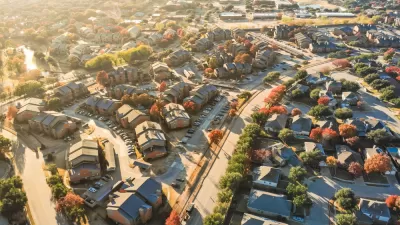The chief minister of the Indian state of Maharashtra (home to Mumbai) is pushing to rationalize the region's density controls, which had been prone to abuse by developers. Some fear the controls will result in more homogenous designs.
Until recently in Mumbai, "[a]n ambiguous set of development control regulations allowed policy makers to grant additional square footage, or a higher floor-area ratio (FAR), for architectural elements such as balconies and flower beds," writes Aparna Piramal Raje. "Developers misused this provision to construct as much as 10 times more than their allotted square footage in some cases, according to Abhisheck Lodha, managing director of real estate developer Lodha group."
However, Prithviraj Chavan, the chief minister of the state of Maharashtra (home to Mumbai), has proposed new policies that would "improve the rule of law in real estate development," by rationalizing FAR regulations.
“A decision was made that definitely hurt all developers – including us in the short term – but in the long term has made this city’s planning permission process less opaque and hopefully at some point or the other will make it faster,” said Abhisheck Lodha, managing director of real estate developer Lodha group.
"Other developers such as Ashutosh Limaye, head of research at global realtor Jones Lang LaSalle’s India office, are more guarded, noting that the change in regulations has had unanticipated negative consequences, making buildings more formulaic," adds Raje.
“I love features such as flower beds, architectural projections, voids, ducts, a play of solid versus voids,” Limaye says. “Because the provisions were grossly misused, the government came down heavily on them and stopped them. But what it has done is made the elevations very dull now. The projects that got approved under the newer norms are like matchboxes.”
FULL STORY: India’s cities set to benefit from urban planning controls

Depopulation Patterns Get Weird
A recent ranking of “declining” cities heavily features some of the most expensive cities in the country — including New York City and a half-dozen in the San Francisco Bay Area.

Pennsylvania Mall Conversion Bill Passes House
If passed, the bill would promote the adaptive reuse of defunct commercial buildings.

California Exodus: Population Drops Below 39 Million
Never mind the 40 million that demographers predicted the Golden State would reach by 2018. The state's population dipped below 39 million to 38.965 million last July, according to Census data released in March, the lowest since 2015.

Google Maps Introduces New Transit, EV Features
It will now be easier to find electric car charging stations and transit options.

Ohio Lawmakers Propose Incentivizing Housing Production
A proposed bill would take a carrot approach to stimulating housing production through a grant program that would reward cities that implement pro-housing policies.

Chicago Awarded $2M Reconnecting Communities Grant
Community advocates say the city’s plan may not do enough to reverse the negative impacts of a major expressway.
City of Costa Mesa
Licking County
Barrett Planning Group LLC
HUD's Office of Policy Development and Research
Mpact Transit + Community
HUD's Office of Policy Development and Research
City of Universal City TX
ULI Northwest Arkansas
Town of Zionsville
Urban Design for Planners 1: Software Tools
This six-course series explores essential urban design concepts using open source software and equips planners with the tools they need to participate fully in the urban design process.
Planning for Universal Design
Learn the tools for implementing Universal Design in planning regulations.


























